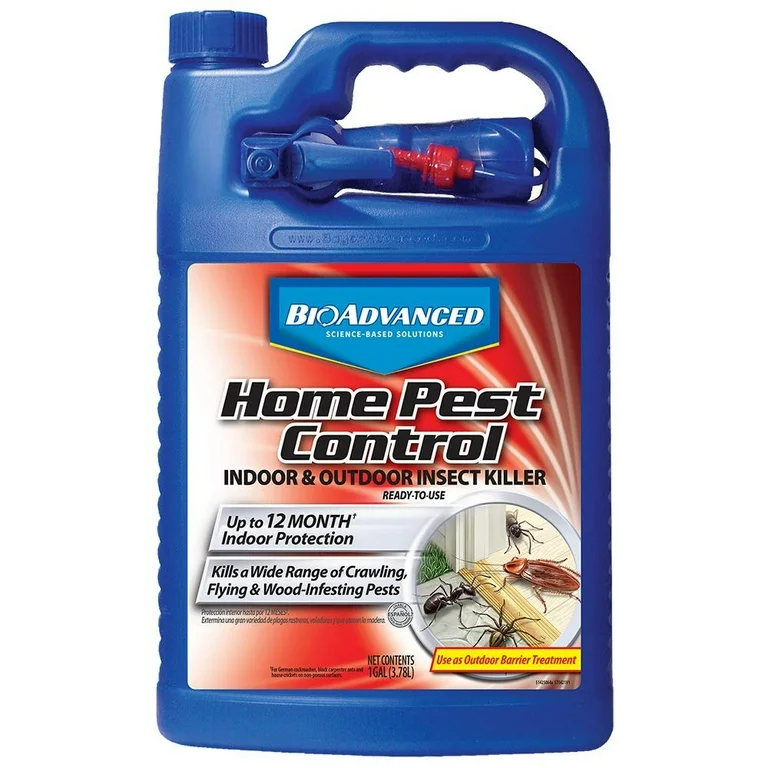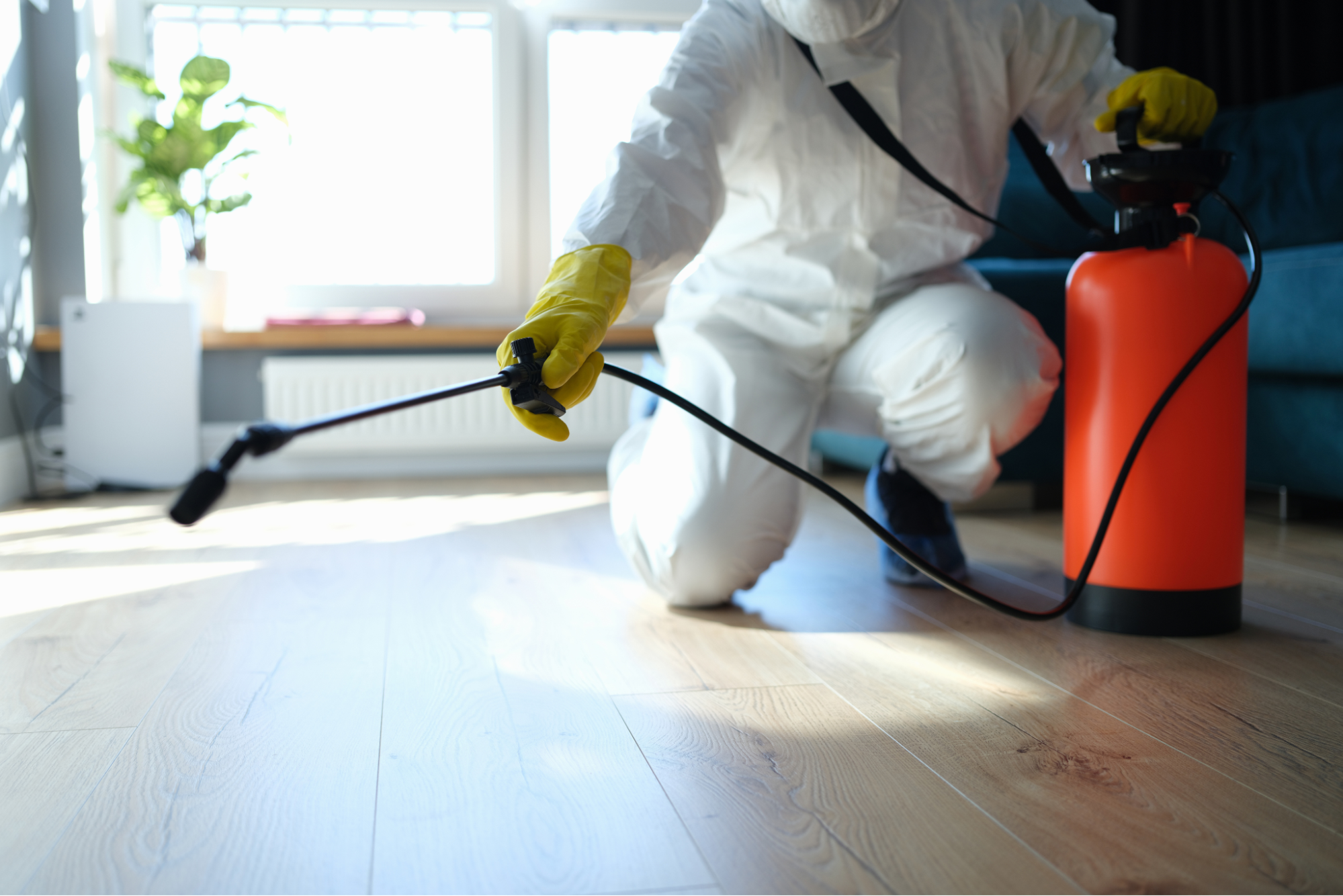A1 Bed Bugs Exterminator Portland - Quick and Professional Solution
A1 Bed Bugs Exterminator Portland - Quick and Professional Solution
Blog Article
Effective Insect Control Services: An Extensive Check Out Extermination Techniques and Avoidance Procedures
In the world of parasite control solutions, the successful management of infestations needs a meticulous strategy that integrates different techniques and steps for both removal and avoidance. From Integrated Parasite Administration (IPM) strategies that focus on lasting options to chemical extermination strategies created for targeted removal, the toolbox versus insects is vast and diverse.

Integrated Insect Administration (IPM) Approaches
Integrated Insect Monitoring (IPM) Techniques encompass a detailed approach to pest control that concentrates on prevention, surveillance, and control approaches to effectively take care of bug populaces. By integrating numerous strategies, IPM aims to minimize the influence of insects while also decreasing the dependence on chemical pesticides. Avoidance exists at the core of IPM, highlighting practices like proper hygiene, upkeep of health, and sealing entry indicate hinder parasites from infesting structures. Tracking plays a vital duty in IPM by consistently checking and identifying insect levels to figure out the ideal treatment thresholds. Control techniques in IPM prioritize using physical, biological, and cultural strategies prior to turning to chemical treatments as a last hope. These methods consist of introducing natural killers, habitat modification, and utilizing trapping gadgets to keep bug populations in check. In general, IPM fosters a lasting and eco mindful technique to pest monitoring, promoting lasting services that secure both human health and the community.
Chemical Elimination Strategies
Chemical elimination techniques are generally utilized in insect control services to effectively get rid of pest populations that present a danger to human health and wellness and home. These methods involve using numerous chemical compounds especially designed to target and get rid of bugs such as pests, rodents, and various other undesirable animals. The application of pesticides, pesticides, rodenticides, and various other chemical agents is very carefully managed to make sure maximum performance while reducing risks to people, animals, and the atmosphere.
Among the crucial advantages of chemical extermination techniques is their capacity to supply quick and targeted outcomes, making them specifically beneficial in instances of serious infestations or immediate parasite control requirements - a1 pest control portland bed bugs. However, it is necessary to highlight the relevance of correct handling, application, and disposal of these chemical products to stop unplanned damage
Additionally, incorporated pest administration (IPM) techniques usually incorporate chemical extermination techniques with other methods such as sanitation, habitat alteration, and biological controls to create a detailed and sustainable pest control technique. By incorporating chemical extermination strategies carefully within an IPM framework, insect control solutions can successfully manage pest populations while lessening possible risks to human health and the environment.
Biological Insect Control Approaches
Employing all-natural killers and parasites to handle bug populations is a sustainable approach known as biological pest control. a1 pest control in portland oregon bed bugs. One usual biological control method includes introducing natural enemies of the target bug species, such as ladybugs for aphid control or nematodes for termite invasions.
An additional effective biological control technique is making use of microbial pesticides. These are naturally happening microorganisms, such as infections, fungi, and bacteria, that particularly target and infect specific pest types. By using these microbial agents, insect populations can be effectively minimized without triggering or harming beneficial organisms damage to the environment.
Physical Insect Prevention Measures
Applying physical pest prevention procedures involves utilizing barriers and architectural adjustments to discourage parasites from infesting a home or getting in (a1 pest control portland bed bugs). One reliable approach is securing all prospective access factors such as gaps around doors, windows, and utility penetrations. Installing door moves, screens on windows, and sealing splits in the foundation can assist stop insects like bugs and rats from accessing inside. In addition, maintaining a clutter-free and tidy setting is critical as pests are attracted to food resources and concealing areas. Frequently examining and repairing any broken displays, vents, or roofing system tiles can also assist in maintaining pests out.
One more physical avoidance step is the usage of obstacles like fencing to keep bigger insects such as raccoons or deer away from the residential or commercial property. By executing these physical bug prevention steps, building owners can substantially decrease the danger of pest invasions and the damages they can trigger.
Professional Bug Inspection Treatments
Conducting thorough and organized bug examinations is a fundamental element of expert parasite management methods. Expert pest examiners are trained to thoroughly check out properties for indicators of infestations, identifying pest species, entry points, and conducive conditions.

Final Thought
In final thought, efficient insect control solutions employ a selection of methods, including Integrated Insect Administration methods, chemical extermination methods, biological controls, and physical avoidance measures. Specialist insect examination procedures play an essential function in recognizing and addressing pest issues in a prompt way. By applying a mix of these approaches, homeowner can successfully avoid and take care of bug infestations.
From Integrated Bug Monitoring (IPM) techniques that prioritize lasting remedies to chemical extermination methods developed for targeted removal, the toolbox versus pests is substantial and multifaceted.Integrated Pest Monitoring (IPM) Methods incorporate an extensive technique to pest control that focuses on surveillance, prevention, and control approaches to effectively manage insect populaces.Chemical extermination techniques are commonly used in bug control solutions to successfully remove insect populations that posture a hazard to human wellness and building.Using natural predators and bloodsuckers to handle pest populaces is a lasting technique understood as biological bug control.In a1 portland bed bug exterminator conclusion, effective insect control services employ a range of methods, including Integrated Insect Administration approaches, chemical extermination approaches, biological controls, and physical avoidance steps.
Report this page